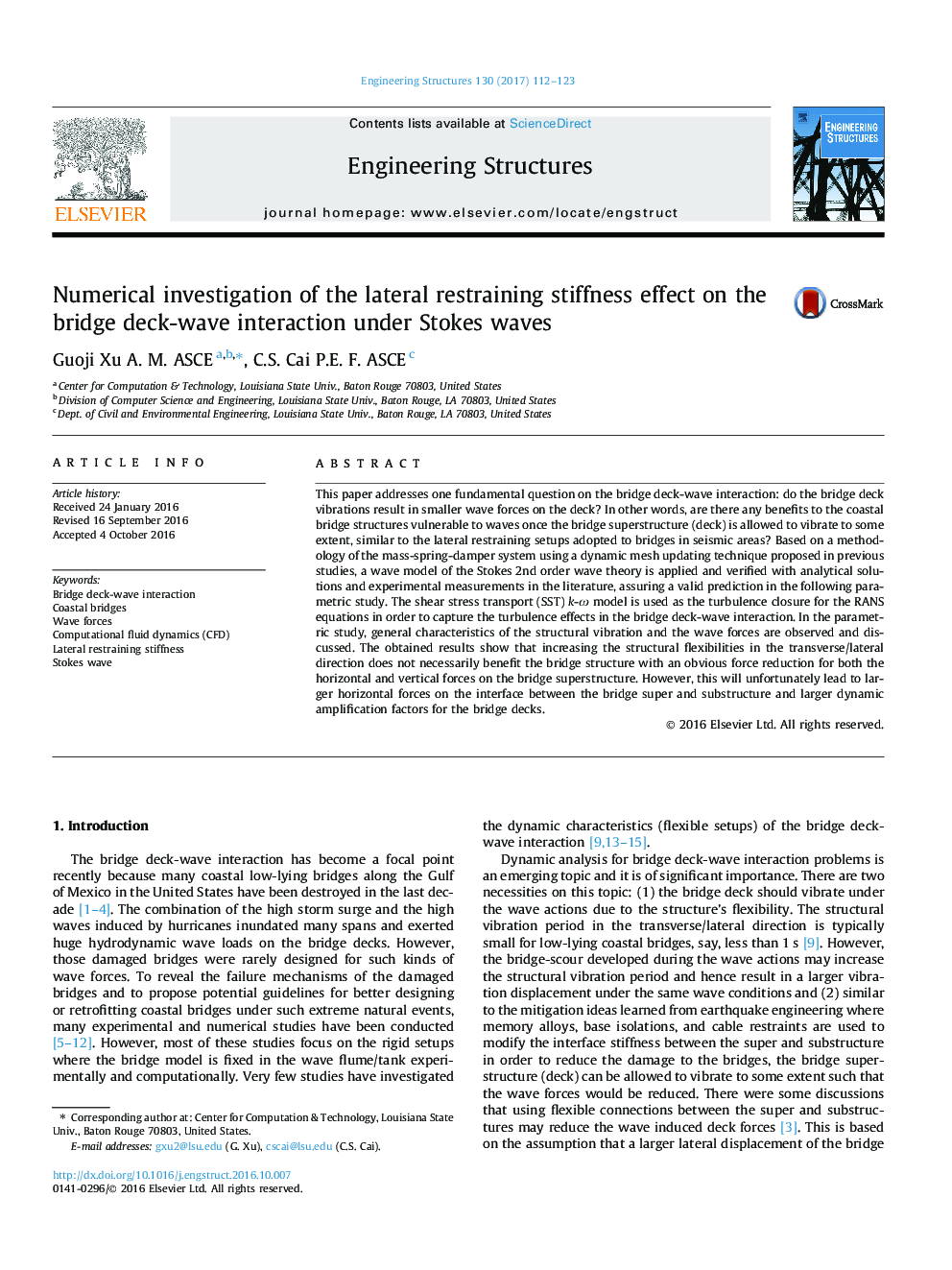| Article ID | Journal | Published Year | Pages | File Type |
|---|---|---|---|---|
| 4920556 | Engineering Structures | 2017 | 12 Pages |
Abstract
This paper addresses one fundamental question on the bridge deck-wave interaction: do the bridge deck vibrations result in smaller wave forces on the deck? In other words, are there any benefits to the coastal bridge structures vulnerable to waves once the bridge superstructure (deck) is allowed to vibrate to some extent, similar to the lateral restraining setups adopted to bridges in seismic areas? Based on a methodology of the mass-spring-damper system using a dynamic mesh updating technique proposed in previous studies, a wave model of the Stokes 2nd order wave theory is applied and verified with analytical solutions and experimental measurements in the literature, assuring a valid prediction in the following parametric study. The shear stress transport (SST) k-Ï model is used as the turbulence closure for the RANS equations in order to capture the turbulence effects in the bridge deck-wave interaction. In the parametric study, general characteristics of the structural vibration and the wave forces are observed and discussed. The obtained results show that increasing the structural flexibilities in the transverse/lateral direction does not necessarily benefit the bridge structure with an obvious force reduction for both the horizontal and vertical forces on the bridge superstructure. However, this will unfortunately lead to larger horizontal forces on the interface between the bridge super and substructure and larger dynamic amplification factors for the bridge decks.
Related Topics
Physical Sciences and Engineering
Earth and Planetary Sciences
Geotechnical Engineering and Engineering Geology
Authors
Guoji (A. M. ASCE), C.S. (F. ASCE),
